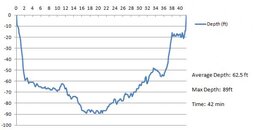As we all wish to avoid a similar situation for ourselves or family/friends, here is a web site I found that my be helpful in planning your next dive vacation. I can't swear to the accuracy of the information, but it gives you a place to start. Also, you can always contact the resort you are interested in and inquire about the availability of medical assistance and chamber.
Worldwide Hyperbaric Chamber Locator, Contact London Recompression & Hyperbaric facilities - The London Diving Chamber
Worldwide Hyperbaric Chamber Locator, Contact London Recompression & Hyperbaric facilities - The London Diving Chamber




